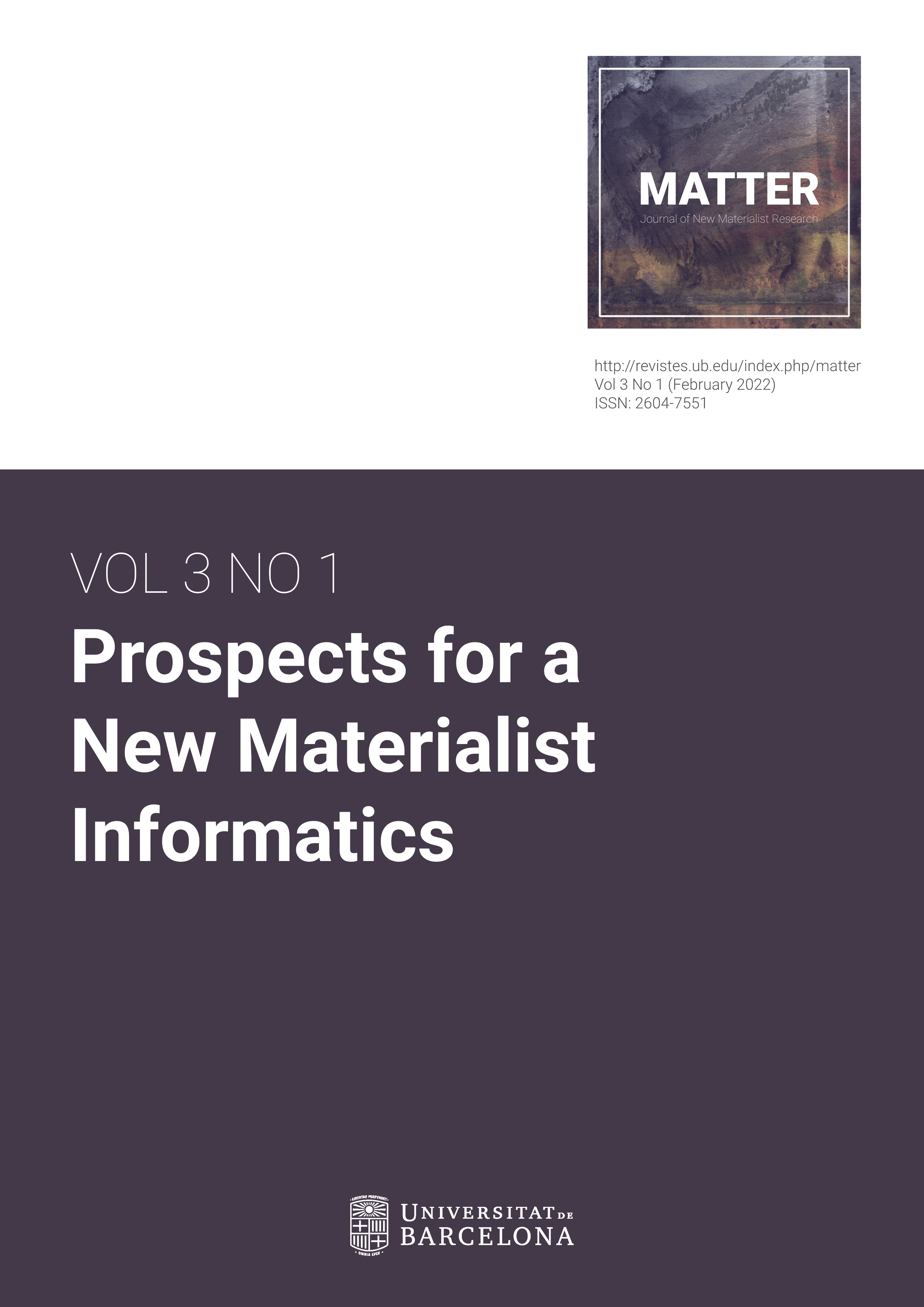Cybersecurity and Simondon's Concretization Theory: Making Software More Like a Living Organism
DOI:
https://doi.org/10.1344/jnmr.v3i1.38956Keywords:
Individuation; Information; Cybersecurity; Simondon; Associated Milieu; Software.Abstract
The cybersecurity crisis has destabilized the field of informatics and called many of its foundational beliefs into question. This paper argues that Gilbert Simondon’s theory of the origin and development of technical objects helps us identify faulty theoretical assumptions within computer science and cybersecurity. In particular, Simondon’s view is that the process of the ‘individuation’ of technical objects can have similarities with the development of living beings – a view that stands in stark contrast with hylomorphic and reductionist views of technical objects currently common in computer science. We argue that those common hylomorphic approaches to software development lead to excessive modularity in software applications, which in turn results in less secure systems. To investigate a new ontological basis of software security, we look to Simondon’s ontology to reconsider what makes a piece of software vulnerable in the first place, and we focus on two concepts in his general theory of ontogenesis – ‘individuation’ and ‘associated milieu’. By examining a case study of a malware infection attack, we show that the event of a cyberattack unleashes a ‘co-concretization’ process of software applications and their associated milieu, namely, their operating system. Both the application and the operating system evolve from an abstract form to a more concrete form by re-inventing their own interiors and re-orienting their relationship to each other. We argue that software development will be more secure if it takes inspiration from the development of living beings and refocuses on the dynamic reciprocal relationship between software applications and their technical and social environment.
Downloads
References
Barad, Karen (2003). Posthumanist performativity: Toward an understanding of how matter comes to matter. Signs: Journal of Women in Culture and Society, 28(3), 801–831. https://doi.org/10.1086/345321
Bardin, Andrea (2015). reforming the concepts of form and information. In Epistemology and political philosophy in Gilbert Simondon individuation, Technics, social systems (pp. 21–34). essay, Springer Netherlands.
Barthélémy, Jean-Hugues & Norman, Barnaby (2015). Aspects of a Philosophy of the Living. In Life and technology: An inquiry into and beyond simondon (pp. 15–20). essay, Meson Press.
Combes, Muriel (2013). In T. LaMarre (Trans.), Gilbert Simondon and the philosophy of the transindividual (pp. 3–4). The MIT press.
Corio, Chris (2009, May). An introduction to security in Windows 7. TechNet Magazine, 13–20.
Hansen, Per B. (2011). The Evolution of Operating Systems. In Classic operating systems: From batch processing to distributed systems (pp. 1–34). Springer New York.
Hui, Yuk (2016). On the existence of digital objects. University of Minnesota Press.
Jacobson, Daniel, Woods, Dan & Brail, Greg (2012). Apis: A strategy guide. O'Reilly.
Light, Jennifer S. (1999). When computers were women. Technology and Culture, 40(3), 455–483. https://doi.org/10.1353/tech.1999.0128
McHoes, Ann M. & Ballew, Joli (2012). process and threat management. In Operating systems demystified (pp. 78–102). McGraw-Hill.
McHoes, Ann M. & Flynn, Ida M. (2010). Windows Operating System. In Understanding Operating Systems (sixth edition, pp. 464–494). South-Western.
Mills, Simon. (2011). Concrete Software: Simondon's mechanology and the techno-social. Fibreculture Journal, (18).
Mills, Simon. (2016). Toward a Theory of Media. In Gilbert Simondon: Information, Technology and Media (pp. 173–206). essay, Rowman & Littlefield.
Monnappa, K A (2018). Code Injection and Hooking. In Learning malware analysis: Explore the concepts, tools, and techniques to analyze and investigate Windows Malware (pp. 283–327). Packt Publishing Ltd.
Rasner, Gregory C. (2021). Cybersecurity and third-party risk: Third party threat hunting. Wiley.
Simondon, Gilbert. (2009a). The position of the problem of ontogenesis . Parrhesiajournal, (7), 4–16.
Simondon, Gilbert (2009b). Technical Mentality. Parrhesiajournal, (7), 17–27.
Simondon, Gilbert (2014). Sur La Technique: (1953-1983). Presses universitaires de France.
Simondon, Gilbert (2017). On the mode of existence of technical objects. (Malaspina Cécile & J. Rogove, Trans.). Univocal Publishing.
Simondon, Gilbert (2020). Individuation in light of notions of form and information. (T. Adkins, Trans.). University of Minnesota Press.
Spolsky, Joel (2004). How Microsoft lost the API War. Joel on Software, 295–312. https://doi.org/10.1007/978-1-4302-0753-5_42
Voss, Daniela (2019). Invention and capture: A Critique of simondon. Culture, Theory and Critique, 60(3-4), 279–299. https://doi.org/10.1080/14735784.2019.1679652
Wilkes, Mary A. (1970). Conversational access to a 2048-word machine. Communications of the ACM, 13(7), 407–414. https://doi.org/10.1145/362686.362690
Downloads
Published
Issue
Section
License
Copyright (c) 2022 Matter: Journal of New Materialist Research

This work is licensed under a Creative Commons Attribution 4.0 International License.
The authors who publish in this journal agree to the following terms:- Authors retain copyright and grant the journal the right of first publication.
- Texts will be published under a Creative Commons Attribution License that allows others to share the work, provided they include an acknowledgement of the work’s authorship, its initial publication in this journal and the terms of the license.






